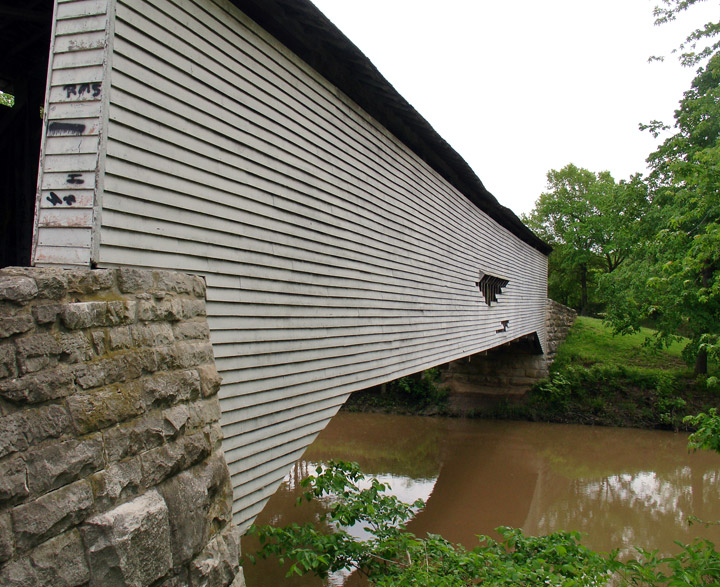

Union Covered Bridge

Union Covered Bridge
Covered bridges are a reminder of days gone by. representing slower-paced times and an era of fine craftsmanship. Union Covered Bridge, one of only four standing covered bridges in Missouri. is an example of these nostalgic structures.
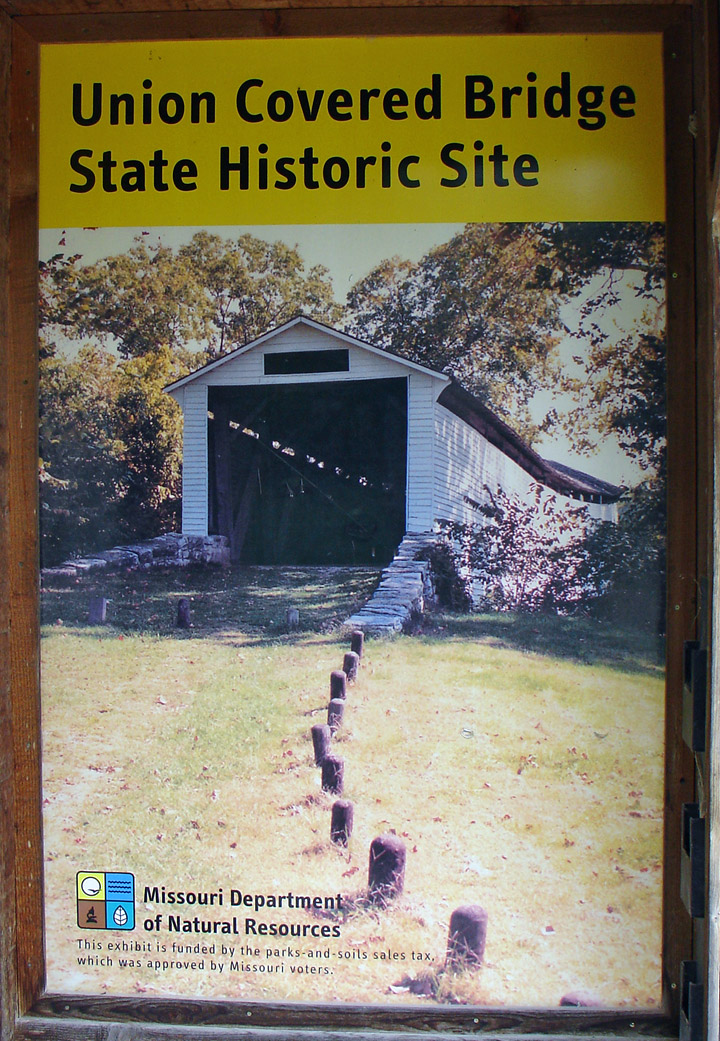
Between 1849 and 1870, two uncovered bridges across the Elk Fork of the Salt
River on the Paris-to-Fayette road failed. In 1870. four months after condemning
the second bridge, the Monroe County court ordered a covered bridge to be built
on this location, allocating $5,000 for it and a similar structure across the
North Fork of the Salt River.
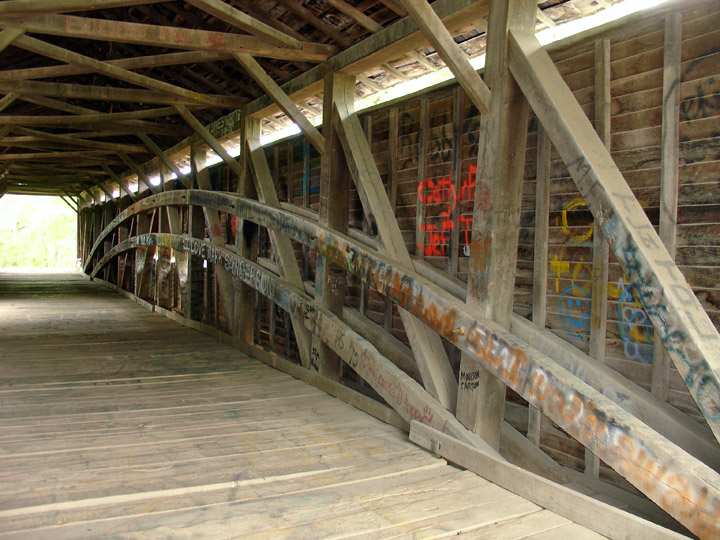
Burr-arch truss
Joseph C. Elliot built the bridge, which is the only covered bridge left in Missouri representing the Burr-arch truss system, in 1871. The Burr-arch design, which Elliot doubled, was named for its creator, Theodore Burr. Burr had built so many bridges using that design that he is called by many the father of American bridge building. The other remaining covered bridges in Missouri used the Howe-truss design. There were many different truss designs, but only these two types have survived in Missouri.
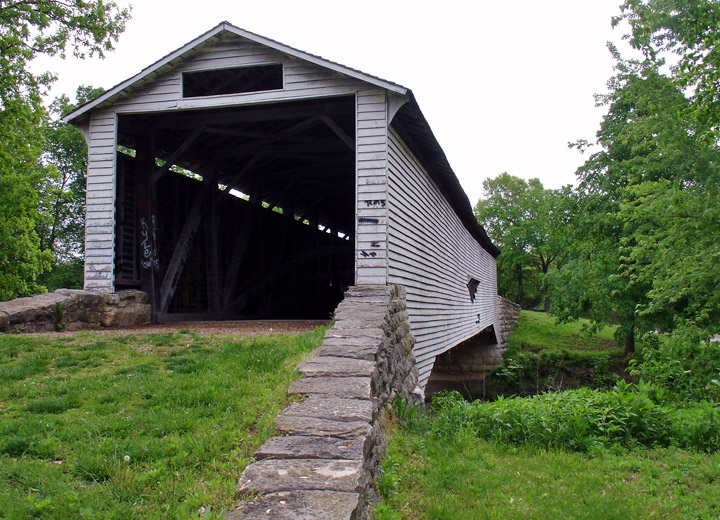
The timbers in Union Covered Bridge are fashioned from local oak and fastened
together largely with treenails or trunnels, with a few bolts and nails added
for strength. Hand-riven clapboard siding and wooden shingles enclosed the
bridge. It was completed approximately a year-and-a-half after the project
began. The bridge is 120 feet long, 17 1/2 feet wide and has an entrance 12 feet
high — high enough to admit a wagonload of hay.
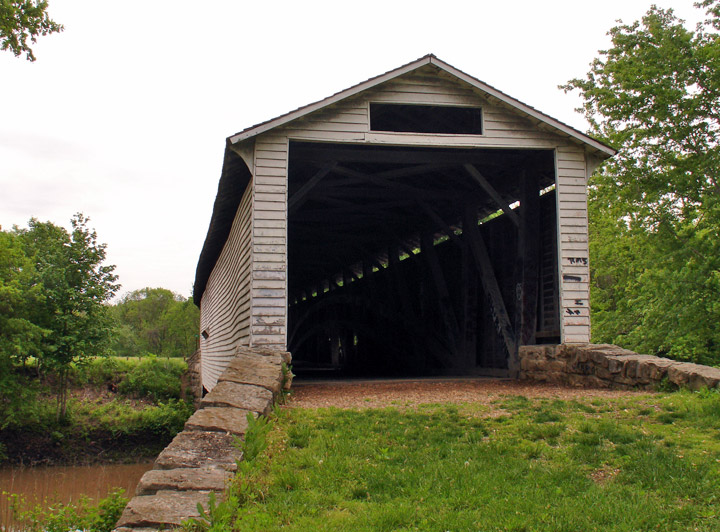
Why a covered bridge? There are several reasons why communities began opting for
covering their bridges. It kept the water out of the joints, where it might
freeze during winter or cause rotting during the summer. Covering the bridge also
strengthened the structure by making it more solid. The barn like appearance of a
covered bridge made it easier for farm animals to cross the river without
becoming nervous. One unexpected result of covering brides was that it provided
a place for early entrepreneurs to advertise their products with signs painted
or glued to the sides of the bridge, often without permission.
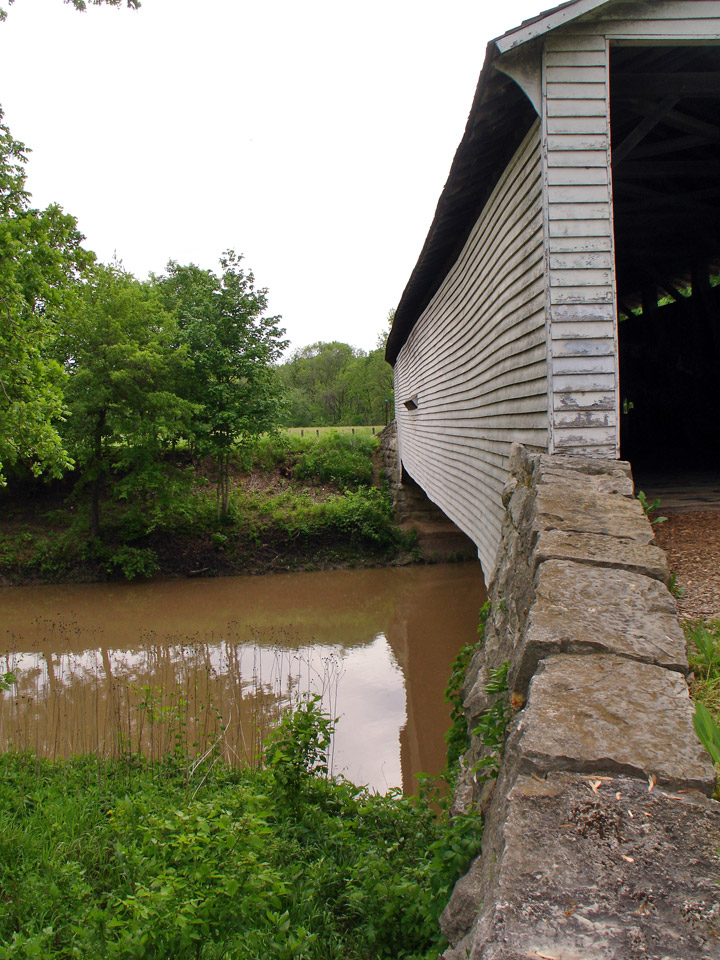
As weight loads increased with the arrival of the railroad industry, and since
railcars were able to carry iron and steel to construction sites, wooden bridges
were eventually replaced by metal bridges that did not require as much weather
protection. The use of metal and concrete for vehicular bridges that could span greater distances than
wooden bridges eventually led to the covered bridges’ demise.

Union Covered Bridge has been threatened frequently by its three main enemies:
high water, fire and neglect. The structure nearly succumbed to neglect in the
late 1960s, but was restored in 1968 after the Missouri Legislature passed a
bill authorizing the Missouri State Park Board to take possession of, repair and
preserve the five remaining covered bridges in the state. The bridge was
partially restored using materials from the Mexico Covered Bridge, which had
been destroyed by floods shortly after the state took possession of it.
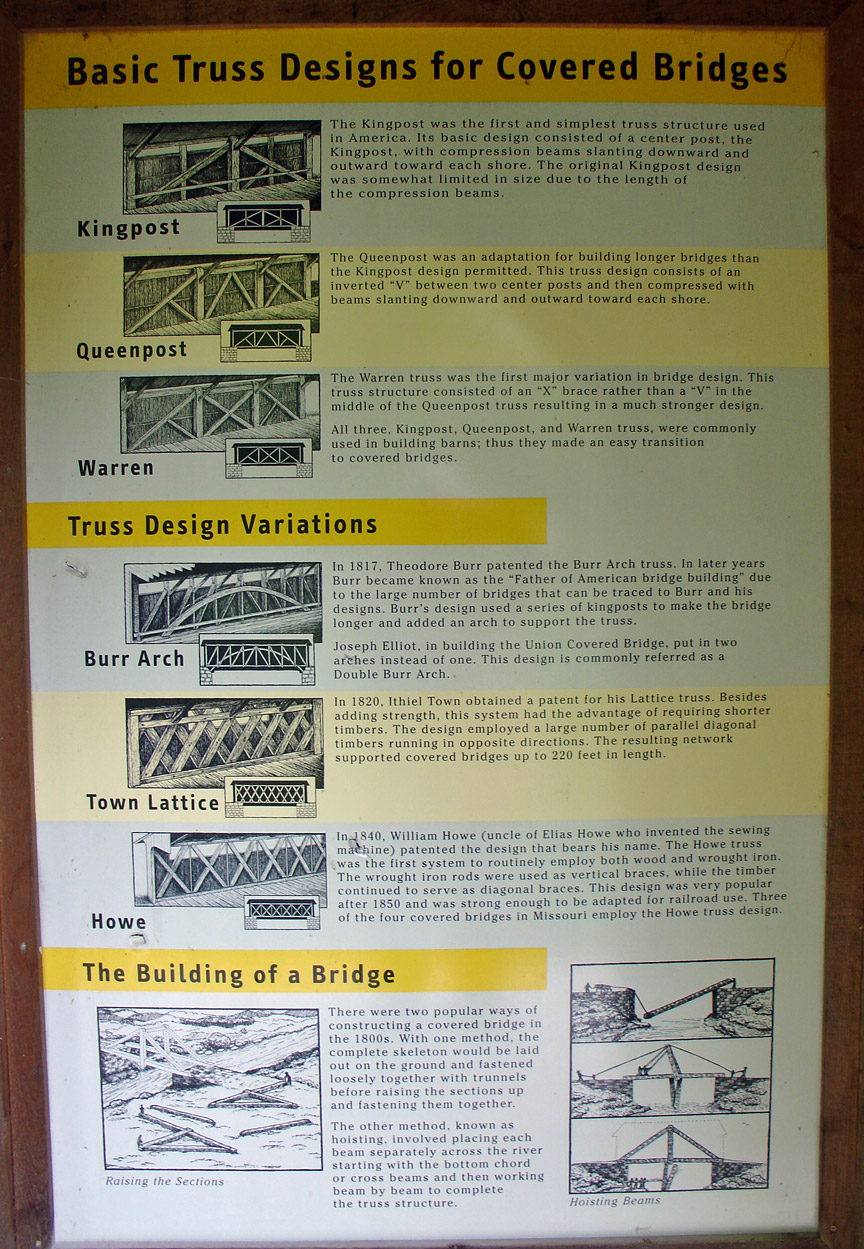
Two years later, the bridge was closed to all but pedestrian traffic after
overweight trucks damaged its structural timbers. That same year, it was
officially listed in the National Register of Historic Places. A second
restoration of the bridge was completed in 1988, replacing rotted support
timbers and warped siding and repairing failed joints.
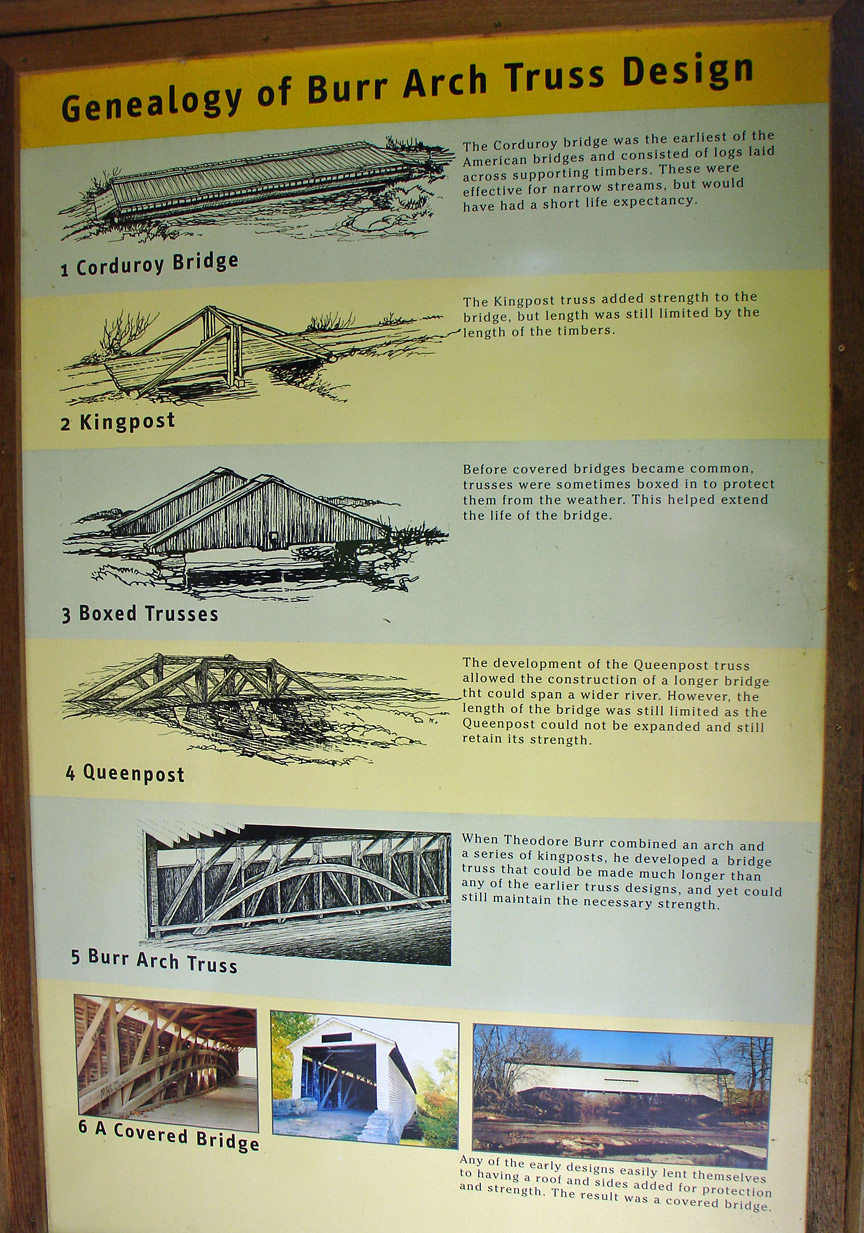
Named after the nearby Union Church, Union Covered Bridge served travelers in
Monroe County for 99 years and remains an important structure in the area’s
history. It served not only as a bridge, but also as a local landmark, emergency
shelter and signboard. Today, it serves as a state historic site and the scene
of an occasional baptism or wedding.
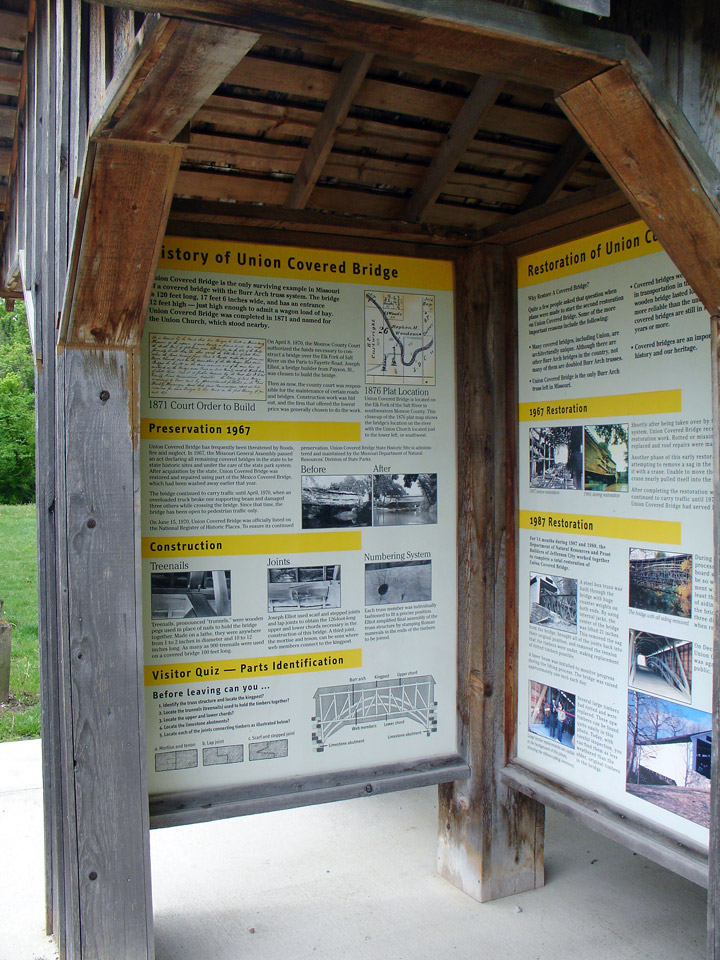
Missouri’s other standing covered bridges are
Locust Creek Covered Bridge in
Linn County, Sandy Creek Covered Bridge in Jefferson County and
Burfordville
Covered Bridge in Cape Girardeau County.
